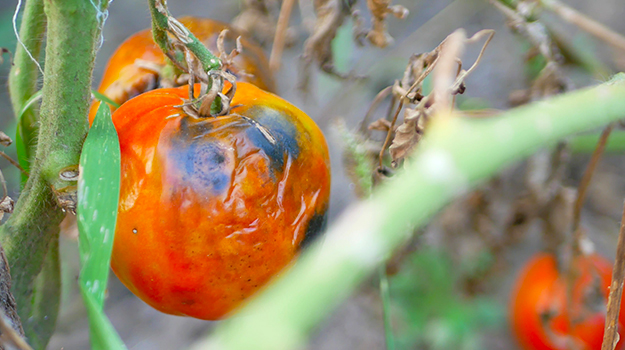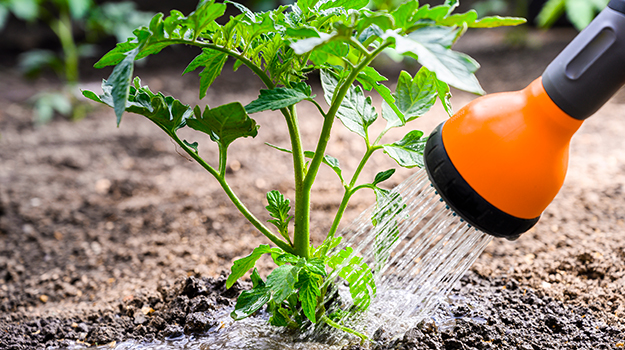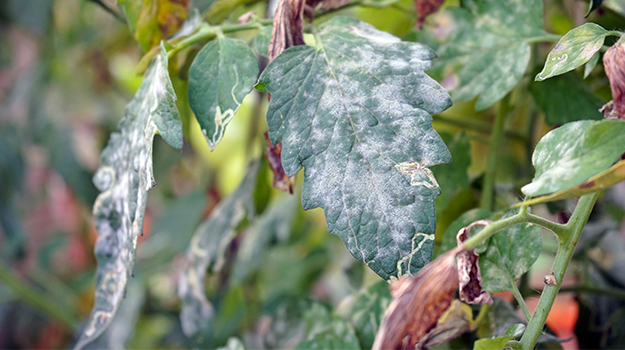Late blight is one of the most common fungal diseases in plants, and tomatoes are particularly sensitive to it. It is caused by a fungus that spreads rapidly in warm, humid weather, making the disease more prevalent during a wet summer.
How to tell if my tomatoes are affected?
Dark green spots first appear on the edges of the leaves. The lesions quickly turn grey, and then brown, and the leaves fall off. The stems also turn brown, and then, brown spots appear on the fruits, which take on a marbled, leathery appearance.
Note that most affected plants will continue to produce and that fruits may mature before the disease affects them.
How to stop the propagation of late blight?
Late blight is treated with fungicides. Follow the manufacturer's recommendations carefully as these products can also be harmful to plants.
To prevent the spread of the disease, remove affected plants from the garden, place them in a garbage bag and dispose of them. If growing in a pot, simply move the container to another area of the garden where it will receive 8 hours of sunlight per day.
How to prevent late blight in tomatoes?
Prune your tomato plants by removing the stems that don’t bear any flowers to allow the air and light to circulate. Always water at soil level to avoid wetting the leaves. Use mulch to prevent any spores that may be present in the soil from splashing onto the leaves when watering. Finally, remove debris from the surface of the soil, and avoid composting affected plants.
Once the fungus is present, it can easily overwinter in the soil. Rotate crops and treat the soil. You can amend it with green manures (for example, mustard can be planted to enrich the soil and make it healthier, while preventing bare spots).
What is the difference between late blight and powdery mildew?
Often confused, powdery mildew and late blight are distinguished by the colour of the spots. While late blight is characterized by the formation of concentric yellow spots, powdery mildew is characterized by the presence of dusty, white mold on the plant.
Can I eat tomatoes affected by late blight?
Although it is not recommended to eat vegetables from diseased plants, late blight does not pose a risk to human consumption. Healthy tomatoes from infected plants are safe to eat.



